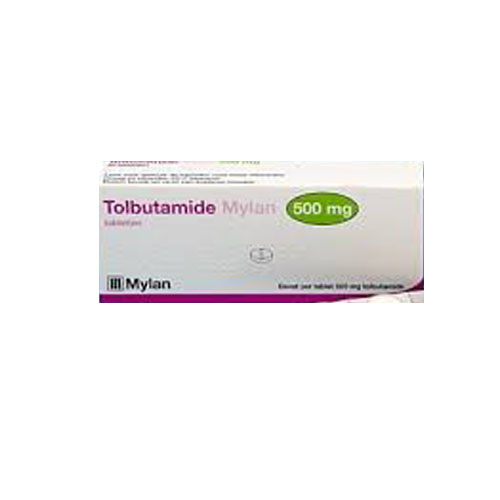Tolbutamide: Benefits, Uses, Side Effects, and How to Use
Tolbutamide is an oral medication used to manage type 2 diabetes by stimulating insulin production from the pancreas, thereby lowering blood glucose levels. Commonly known under the brand name Orinase, it is typically taken with meals to reduce the risk of gastrointestinal side effects. Benefits include effective blood sugar control and convenience, though potential side effects such as hypoglycemia and gastrointestinal discomfort should be monitored. Tolbutamide is a key option for those needing additional help with blood glucose management when lifestyle changes alone are insufficient.
Description
Tolbutamide is a medication used to manage blood sugar levels in individuals with type 2 diabetes. It is part of a class of drugs known as sulfonylureas, which work by stimulating the pancreas to release more insulin. Understanding tolbutamide, its uses, side effects, and proper usage can help ensure effective management of diabetes and minimize potential risks. This article provides a comprehensive overview of tolbutamide, including its benefits, how to use it, potential side effects, and answers to common questions about this medication.
What is Tolbutamide?
Tolbutamide is an oral hypoglycemic agent used to treat type 2 diabetes mellitus. It helps lower blood glucose levels by increasing the amount of insulin produced by the pancreas. Tolbutamide is typically prescribed when lifestyle changes such as diet and exercise are not sufficient to control blood sugar levels on their own. It is often used in combination with other medications or insulin to achieve optimal blood glucose control through Tolbutamide.
Tolbutamide Uses
- Blood Glucose Management: Tolbutamide is primarily used to manage blood sugar levels in patients with type 2 diabetes. By stimulating insulin release from the pancreas, it helps reduce hyperglycemia (high blood sugar).
- Supplement to Lifestyle Changes: It is often prescribed when dietary changes, exercise, and other non-pharmacological approaches are not enough to control blood sugar levels. Tolbutamide can be an effective addition to a comprehensive diabetes management plan.
Benefits of Tolbutamide
- Effective Blood Sugar Control: Tolbutamide is effective in lowering blood glucose levels, which helps manage diabetes and prevent complications associated with uncontrolled blood sugar.
- Improves Insulin Sensitivity: By increasing insulin production, tolbutamide can help improve the body’s response to insulin, which is beneficial for maintaining normal blood sugar levels.
- Convenient Oral Medication: As an oral medication, tolbutamide is easy to take and integrates well into daily routines, making it a convenient option for many individuals with diabetes.
How to Use Tolbutamide
- Dosage and Administration: Tolbutamide is typically taken by mouth in the form of tablets. The dosage varies depending on individual needs and should be prescribed by a healthcare provider. It is usually taken once or twice a day with meals to help minimize the risk of gastrointestinal side effects.
- Consistency: For best results, take tolbutamide at the same time each day to maintain consistent blood sugar control. Follow your healthcare provider’s instructions regarding dosage and frequency.
- Monitor Blood Sugar Levels: Regular monitoring of blood glucose levels is essential while taking tolbutamide. This helps ensure that the medication is working effectively and allows for adjustments to dosage if needed.
Tolbutamide Side Effects
While tolbutamide is generally well-tolerated, it may cause side effects in some individuals. Common tolbutamide side effects include:
- Hypoglycemia: Low blood sugar (hypoglycemia) is a common side effect, especially if tolbutamide is taken with other diabetes medications or if meals are skipped. Symptoms of hypoglycemia include dizziness, sweating, shaking, and confusion.
- Gastrointestinal Issues: Some people may experience nausea, vomiting, or abdominal pain while taking tolbutamide. These symptoms are usually mild and can often be managed by taking the medication with food.
- Allergic Reactions: Although rare, some individuals may experience allergic reactions, such as rash, itching, or swelling. If you experience these symptoms, contact your healthcare provider immediately.
- Skin Reactions: As with many medications, tolbutamide may cause skin reactions in some individuals. If you notice any unusual skin changes or reactions, consult your healthcare provider.
Common Questions About Tolbutamide
What is tolbutamide?
Tolbutamide is an oral medication used to manage type 2 diabetes by stimulating insulin production from the pancreas. It helps lower blood glucose levels and is often used when lifestyle changes are insufficient.
When to take tolbutamide?
Tolbutamide is typically taken with meals to help reduce the risk of gastrointestinal side effects and to improve its effectiveness in lowering blood glucose levels. Follow your healthcare provider’s instructions for the exact timing and dosage.
How does tolbutamide lower blood glucose?
Tolbutamide lowers blood glucose by stimulating the pancreas to produce more insulin. This increased insulin helps lower blood sugar levels by facilitating the uptake of glucose into cells.
What is tolbutamide used for?
Tolbutamide is used primarily to manage blood glucose levels in individuals with type 2 diabetes. It helps control hyperglycemia when lifestyle changes alone are not sufficient to maintain normal blood sugar levels.
Tolbutamide and Tolbutamide-Containing Medications
Tolbutamide is available under various brand names, including Orinase, which is one of the common trade names for this medication. The tolbutamide brand name may vary by country or manufacturer, but the active ingredient remains the same.
Conclusion
Tolbutamide is a valuable medication for managing type 2 diabetes, offering benefits such as improved blood glucose control and convenience of oral administration. While it can effectively manage diabetes, it’s important to be aware of potential tolbutamide side effects and to use the medication as directed. Regular monitoring of blood sugar levels and consistent use are key to achieving the best outcomes. If you have any concerns or experience adverse effects, consult your healthcare provider for guidance and support.

